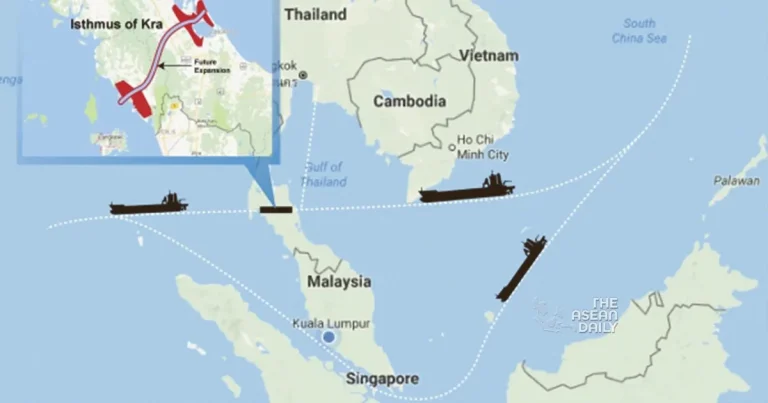21-1-2024 (BANGKOK) Thai Prime Minister Srettha Thavisin has reignited discussions surrounding the long-debated Kra land bridge, a transport corridor across the Kra Isthmus. However, the project continues to face skepticism due to concerns over economic viability, environmental impact, and geopolitical complexities.
The idea of constructing a canal across the narrow southern region of Thailand has captivated the country’s ruling elite for centuries. Yet, the concept has never materialized due to exorbitant construction costs, engineering obstacles, and weak economic justifications. Despite this history, Prime Minister Srettha’s administration is fervently advocating for the land bridge.
Since assuming office in August 2023, Srettha’s primary objective has been to revive Thailand’s economy, which has experienced sluggish growth due to military mismanagement and the repercussions of the COVID-19 pandemic. To achieve this, the government has prioritized the signing of free trade agreements and actively sought foreign investment. Additionally, Bangkok aspires to play a more significant role in global supply chain networks, taking inspiration from Singapore.
In pursuit of this economic vision, Srettha has become the chief proponent of the land bridge project, reviving an idea initially proposed by former Prime Minister Thaksin Shinawatra in 2005. The plan involves constructing deep-water ports in Chumphon province on the Gulf of Thailand side of the isthmus and Ranong province on the Andaman Sea side. These ports would be connected by 90 kilometers of highways, railways, and pipelines. Cargo ships from Northeast Asia would unload their goods in Chumphon, which would then be transported to the other side using trucks and trains. Similarly, vessels carrying products from western Asia and Europe would follow the same route via Ranong.
Despite the enthusiasm surrounding the project, detractors raise valid concerns about its economic feasibility. Critics argue that while bypassing the congested Straits of Malacca may reduce sailing times, the process of unloading, transporting, and reloading goods at each end could ultimately negate time savings and increase transportation costs. Furthermore, the construction of the land bridge could have adverse environmental effects, impacting tourism and fishing industries in southern Thailand. Geopolitically, the ownership of the land bridge could entangle Thailand in the intensifying competition between the United States and China, particularly if Beijing were to finance its construction.
Undeterred by these challenges, Srettha remains determined to proceed with the project and has even proposed a timeline. Construction companies are expected to bid for contracts in mid-2025, with construction commencing later the same year. The project is projected to be completed by 2030, with an estimated total cost of around US$30 billion.
One crucial aspect that remains unclear is the financing of the land bridge. Given the magnitude of the project, substantial foreign investment would be required. Prime Minister Srettha has presented the idea to various countries, including the United States, China, and Japan. However, no firm commitments have been made thus far. While Chinese construction companies are well-suited for building the necessary infrastructure, it is unlikely that Beijing will incorporate the land bridge into its ambitious Belt and Road Initiative (BRI).
The proposed Kra land bridge continues to generate debate and intrigue. As Thailand seeks to propel its economy forward, the government faces the challenge of addressing concerns surrounding the project’s economic viability, environmental impact, and geopolitical implications. Only time will tell if the historical fascination with the Kra land bridge will finally manifest into a tangible reality.




